News
Scubaverse Underwater Photographer Interview: Steve Jones

In an ongoing series, Scubaverse.com’s Underwater Photography Editors Nick and Caroline Robertson-Brown talk to underwater photographers from around the world that they admire.
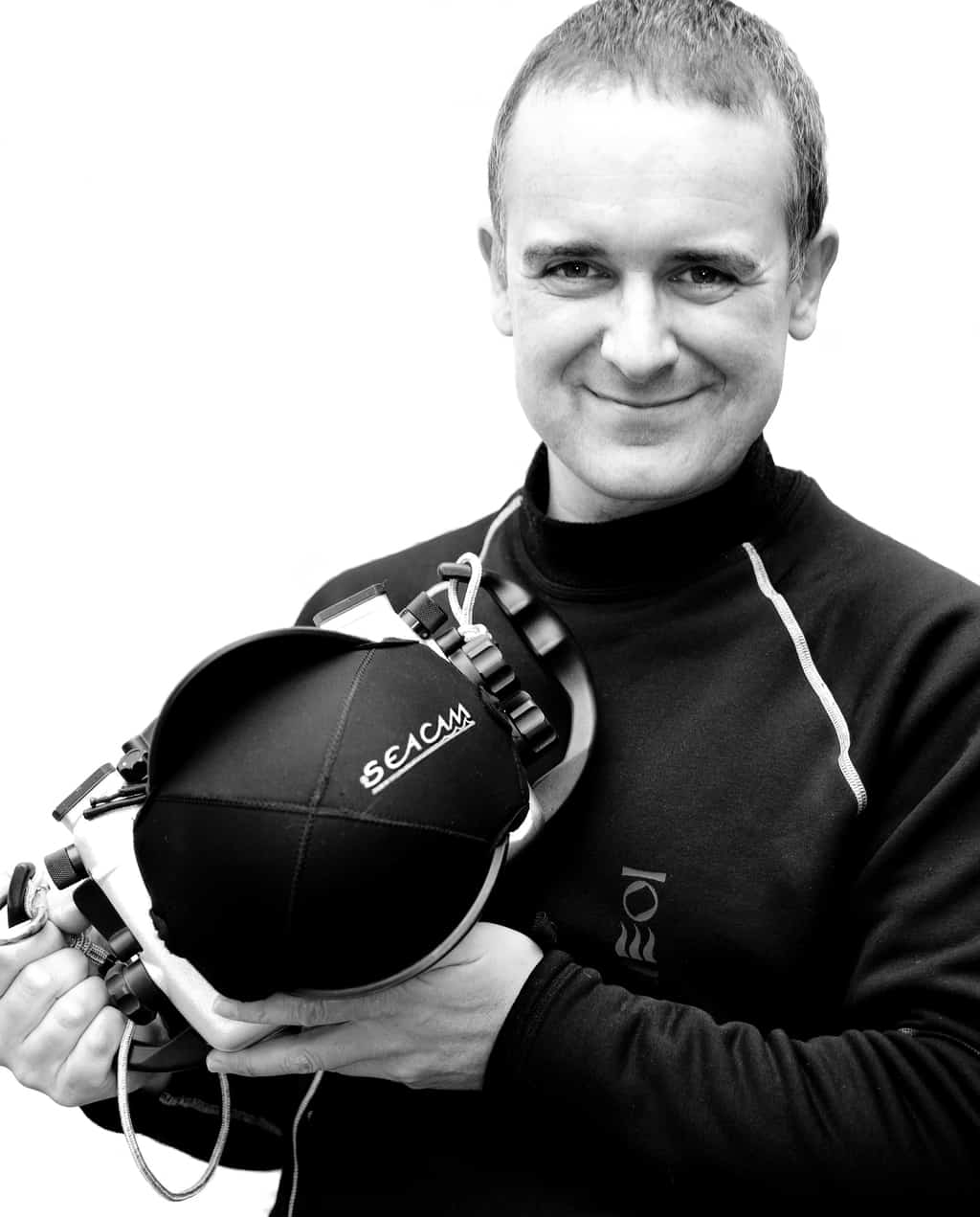 This interview is with Steve Jones.
This interview is with Steve Jones.
My professional diving career began in the early 1990’s when, immediately after university, I decided to take one year out to travel and work as a diving instructor. Seven years later, having lived and dived in Egypt, Malta, the Maldives and the Caribbean, I returned to live in the UK, somewhat reluctantly. By that time my imagery and articles were starting to appear in diving magazines, and since have gone on to be published in over 30 countries. Through photojournalism I’m very lucky to have been given the opportunity to visit places that I once only dreamed of and I’ve had to develop into an all-rounder as a photographer, equally happy writing about maritime history and photographing wrecks as I am when shooting equatorial seascapes awash with colour, or critters crawling through volcanic mud. This has led to quite a diverse portfolio and combined with my more specialist deep wreck photography led to me becoming a Blancpain Edition Fifty Fathoms photographer in 2015, one of four photographers invited annually to contribute to the fine art books produced by this high-end watchmaker. My website is at www.millionfish.com.
N/C: How did your underwater photography start?
SJ: I’ve had a fascination with both the natural world and photography since I was a child. I then learned to dive at the age of 14 but I couldn’t afford an underwater camera until I was working in the Red Sea as a diving Instructor back in 1992. I bought a second hand Nikonos III, and soon found myself assisting visiting professional photographers from whom I learned an enormous amount. It was in 1996 whilst working as an instructor/guide in the Maldives that I got my first break when German magazine Unterwasser published my images. I still regularly contribute to this excellent publication, over 20 years later
N/C: What is your favourite u/w camera equipment (past & present) & why?
SJ: I’ve used SEACAM housings since 1995 and they have never let me down. My favourite piece of kit is a SEACAM converted Nikon RS-UW 13mm fisheye lens. This was one of the original lenses designed for use on the Nikonos RS SLR, and is optimised for underwater use. SEACAM have adapted it for use on modern housed cameras. Its compactness and superb optical quality is particularly useful when technical diving on deep wrecks, where I often shoot at wide apertures due to low light conditions.
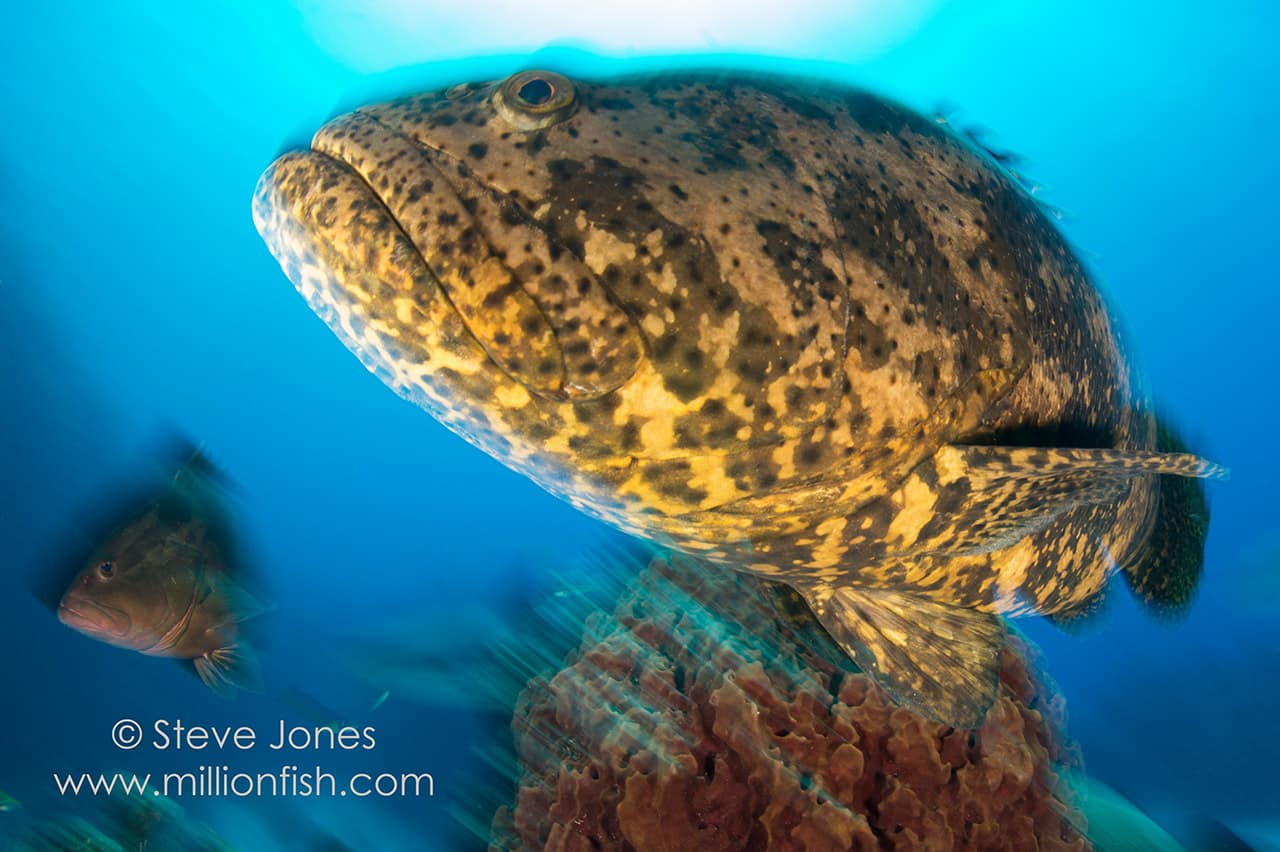
N/C: What would be your advice to anyone new to underwater photography?
SJ:
- Master your diving skills: have buoyancy control that is second to none.
- Build your technical knowledge, particularly your understanding of lighting and the influence of Aperture, Shutter Speed and ISO settings on underwater images, when used with/without strobes. Learn how to balance natural and strobe light as this is very important. Learn about editing and post processing with tools such as Lightroom.
- Study: Read books cover to cover, such as Martin Edge’s “The Underwater Photographer” and keep the kindle versions on hand to refer to whilst you’re on a trip.
- Observe: Immerse yourself in the photography of others and try and understand how the shot was taken and why it works (or not!)
- Practice constantly even on mundane subjects and also above water at every opportunity.
- Be creative and be different. Once you have mastered the basics, allow your own creative style to develop and flourish through your imagery to make it unique. Study composition techniques – there are many articles and books available written by topside and underwater photographers.
- Respect the environment and the oceans’ inhabitants, no matter how small they may be. Photography is a means to communicate the beauty and value of our marine world to those not fortunate enough to see it and as ambassadors for the ocean, our own code of conduct needs to be exemplary.
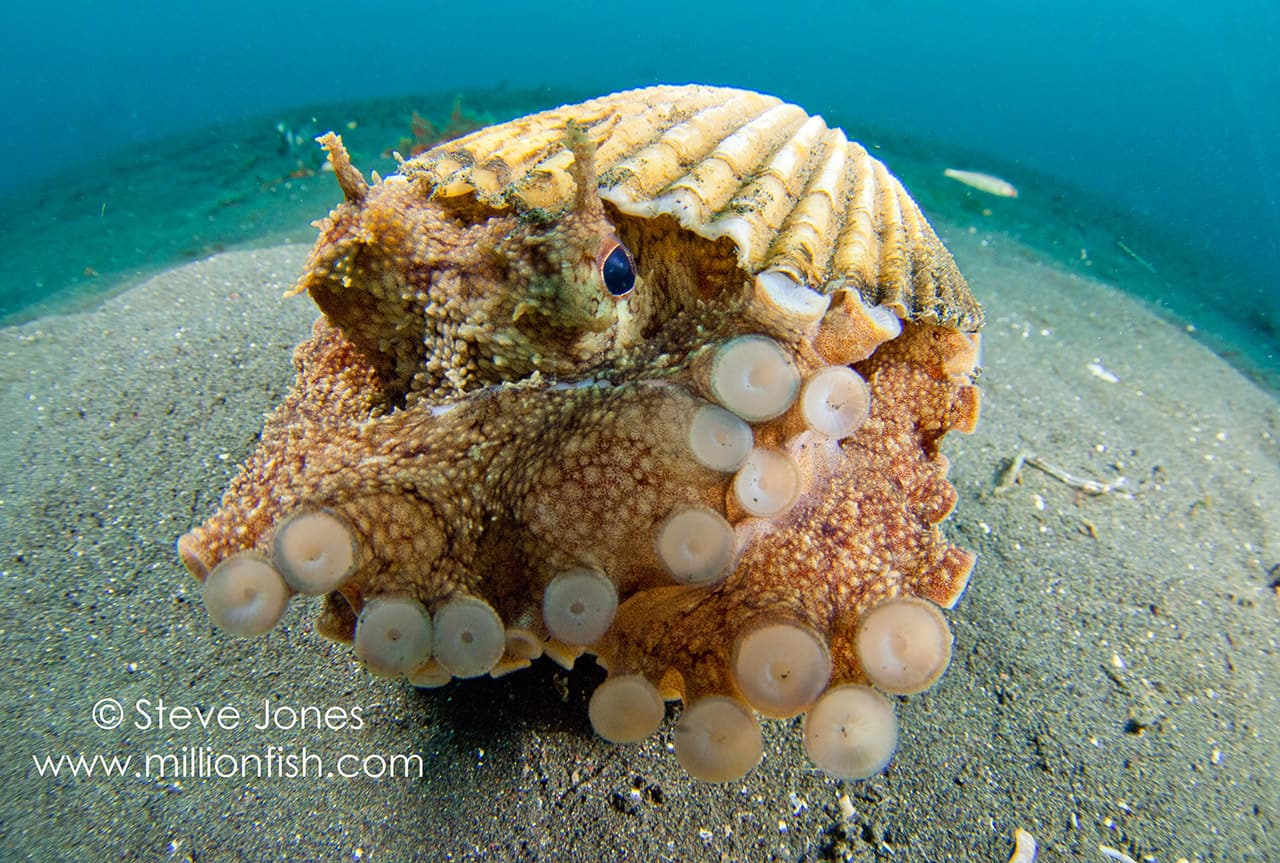
A Coconut Octopus (Amphioctopus marginatus), a species that gathers coconut and mollusc shells for shelter, Lembeh Strait, Sulawesi, Indonesia
N/C: What, or who, has been your single biggest inspiration for your underwater photography?
SJ: My biggest inspiration is my fascination with the marine world and the exploration of it. I try and create images that take the viewers imagination to the place where I took the image, to generate some of the excitement that I felt when I was there. As for photographers who’ve inspired me, David Doubilet had been my inspiration from the start, and I also admire the work of many other photographers: The ones pushing creative boundaries to capture familiar subjects in new ways and the ones pushing physical boundaries, operating in environments where previously un-photographed subjects are found. There are too many to mention here.
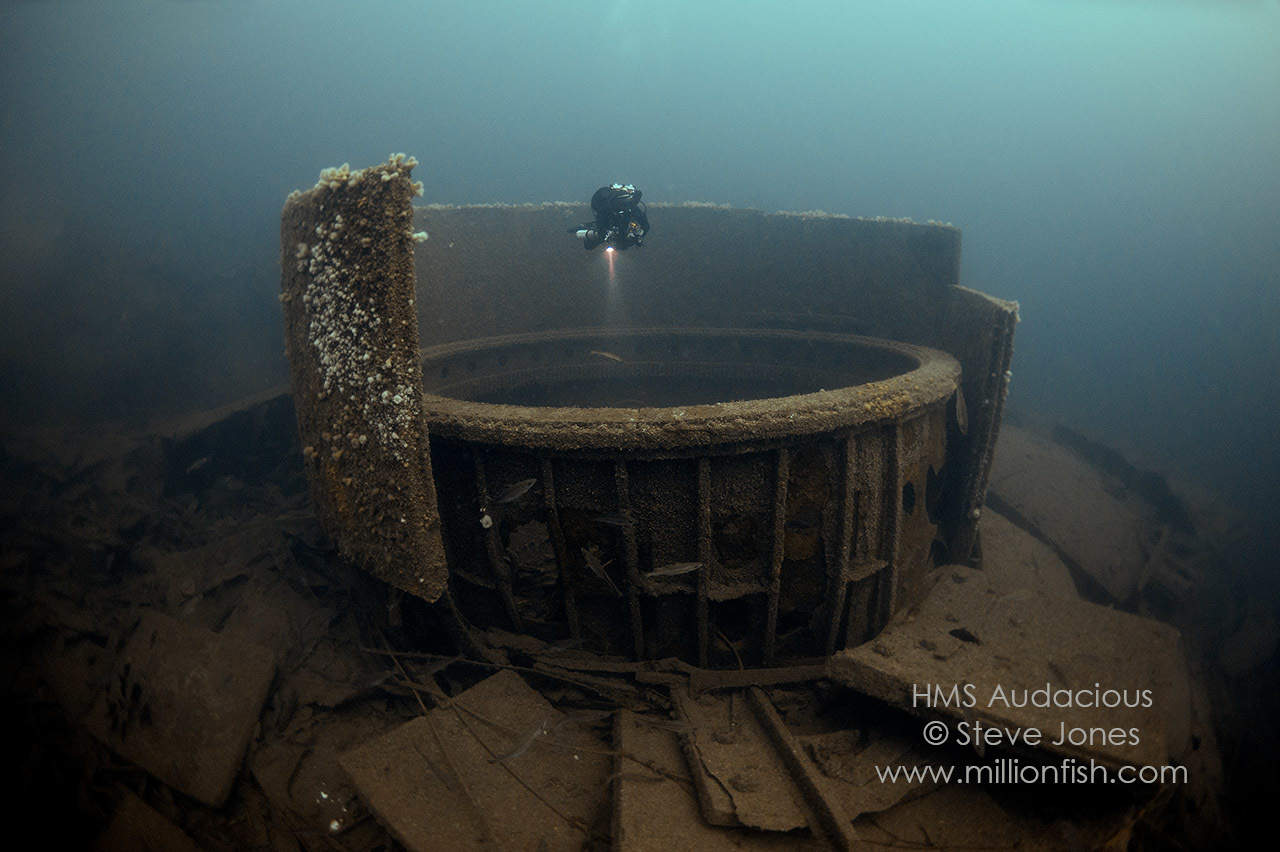
The armoured barbette that housed one of the 5 main gun turrets of HMS Audacious, the first
British battleship to be sunk in WW1
N/C: What image are you most proud of and why?
SJ: It’s actually an image set rather than one image, and that would be of the deep wrecks lying off Malin Head in Ireland. I’d been practicing my techniques for shooting with natural light in deep water for several years, as I like to show the wrecks in their true scale. These wrecks mainly lie between 60 and 70 metres and we only had one dive on each of the most iconic ones. With great team work from my regular dive partner Steve Henshall, we got a set that I was immensely proud of, and it directly led to me being selected as one of the Blancpain Edition Fifty Fathoms photographers.
N/C: Where is your favourite dive location, and is it for the photography?
SJ: I’ve just returned from Cocos and it blew my mind. The diving is simply the best I’ve ever done and I want to go back. For sheer diversity, I love Indonesia and Papua New Guinea. My bucket list is still quite long though…..
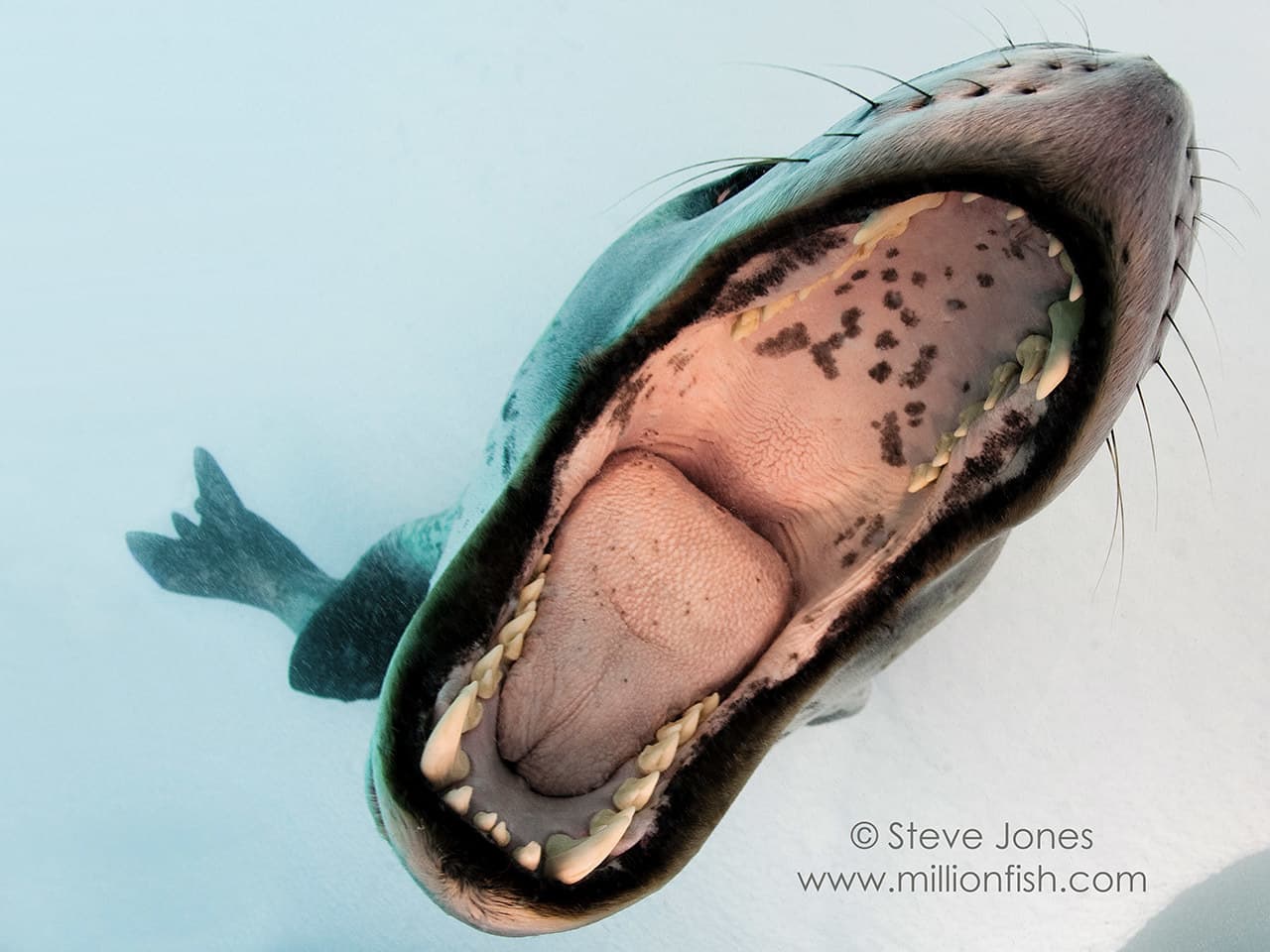
Leopard seal, mouthing its own reflection in the camera port (Hydrurga leptonyx), Astrolabe Island, Antarctica
N/C: What are you views on marine life manipulation, moving subjects?
SJ: Moving and harassing animals sets a disturbing precedent and I firmly believe it goes against the code of conduct that nature photographers should abide by: The animal’s welfare must always come first. However, we need to also keep things in perspective and hold an awareness of all things that impact the marine environment: unsustainable fishing and plastic waste being two of the major ones. At the end of the day it’s all about the ethics you abide by as a marine photographer.
N/C: What do you look for when you are making your images?
SJ: Most of my imagery is captured when on direct assignments for magazines. So first I have to get the “safety” shots in the bag – this is the basic set of publishable quality images that will allow a story to be illustrated and I don’t relax until I have a reasonably good set. Once that objective is met, I let my creativity off the leash and take higher risk shots using less conventional, often experimental techniques and equipment. Overall, I try and capture images that support the subject matter of my story as it makes my writing task much easier if my images are already speaking the words.
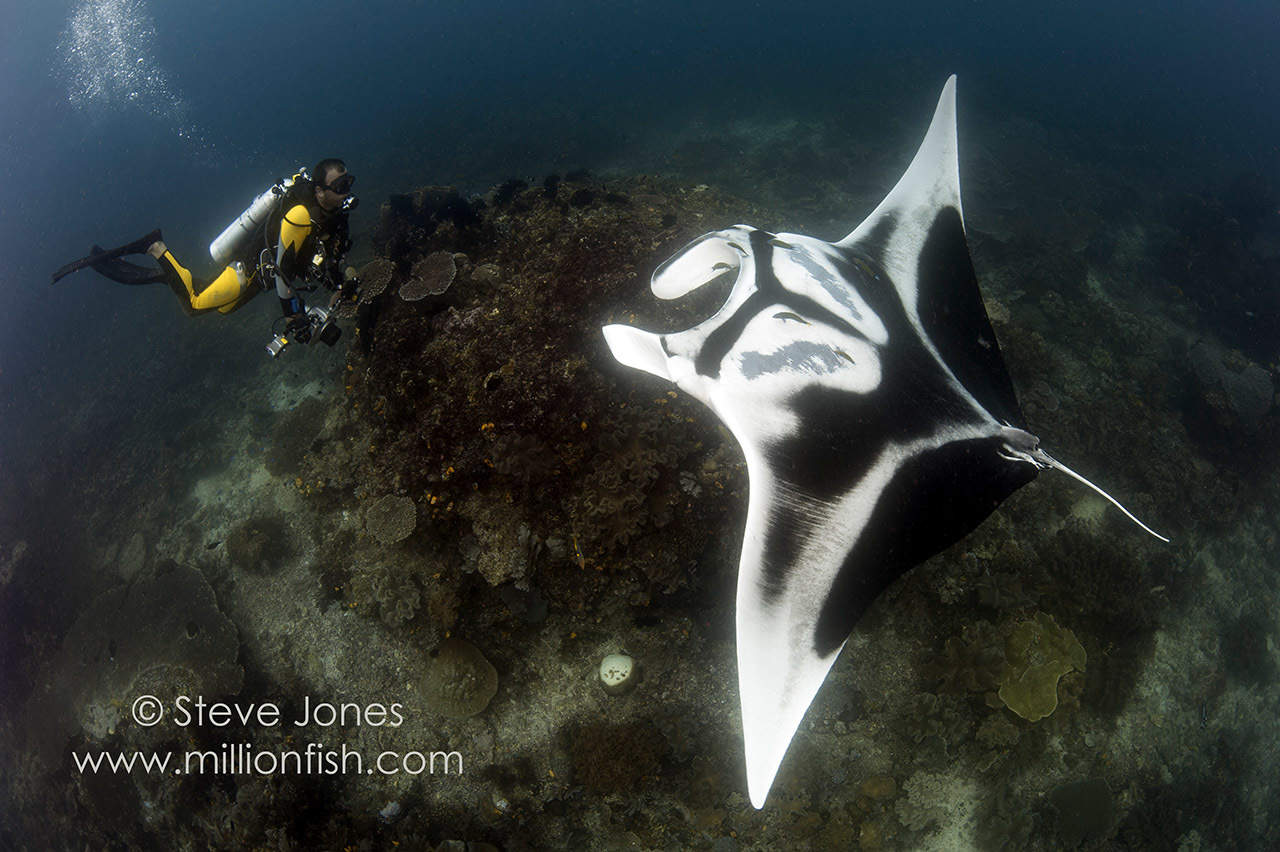
A diver has a very close encounter with a giant oceanic manta ray (Manta birostris), Dampier Strait, Raja Ampat, West Papua, Indonesia
N/C: What motivates you to take u/w photos?
SJ: It’s a creative outlet, a representation of my fascination with wildlife and exploration of the marine world. With wrecks, it is also capturing history: A unique moment in time. At some point in the future, our images will be all that remains of many of the wrecks we now dive. I sincerely hope that the same will not apply to the wonderful marine life we encounter, but it will unless we change our short-term exploitation of this planets limited resources and start thinking more in terms of leaving a home that’s fit for our children to inhabit.
N/C: If you could photograph any one thing/place what or where would that be?
SJ: That would be the Great Whales, a lifelong dream as yet unfulfilled! (They are on my bucket list!)
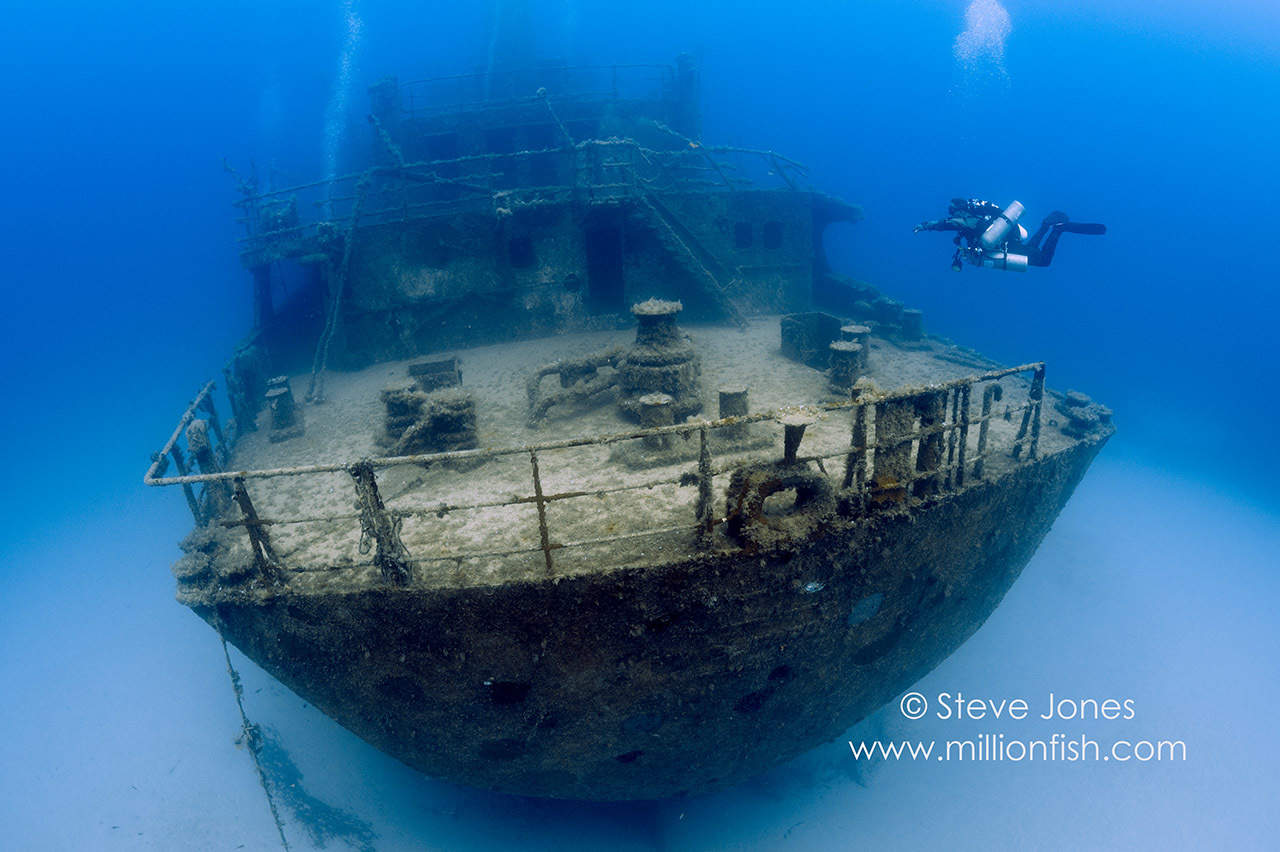
The wreck of the Um El Faroud, Malta.
Blogs
Discover Curaçao with the Ultimate Dive Vacation Guide – 2024 DEMA Special Edition

Dive Travel Curaçao is thrilled to announce the launch of the Curaçao Dive Vacation Guide – 2024 DEMA Special Edition, an expertly curated resource that unveils the unparalleled dive experiences and vacation possibilities awaiting you in Curaçao. Produced exclusively for the Diving Equipment & Marketing Association (DEMA) Show 2024, this special edition guide is packed with exclusive insights, travel tips, and limited-time DEMA offers that make it easier than ever to explore Curaçao’s stunning underwater landscapes and vibrant culture.
Explore Curaçao’s Unmatched Diving Opportunities
With over 70 diverse dive sites along its southern coastline, Curaçao is a bucket-list destination for divers of all experience levels. From thriving coral reefs and intricate marine ecosystems to historic shipwrecks, the island offers a variety of underwater experiences that are hard to match. The Curaçao Dive Vacation Guide – 2024 DEMA Special Edition provides detailed recommendations for both shore and boat diving, making it a valuable tool for divers seeking the best entry points, pristine reefs, and hidden treasures along the coastline. Whether you are an avid wreck diver, or a beginner interested in shallow reefs, Curaçao has it all.

Uncover Eco-Friendly Dive Resorts and Top Dive Operators
This DEMA 2024-exclusive Curaçao guide goes beyond diving to feature insider information on Curaçao’s eco-friendly accommodations, dive resorts, and top-rated dive operators committed to sustainable dive tourism. From all-inclusive resorts that support coral reef restoration initiatives to charming boutique hotels near prime dive locations, the guide helps travelers find the ideal stay to match their vacation goals. It also spotlights trusted dive operators on the island who prioritize environmental preservation, offering travelers a way to enjoy the underwater world responsibly.

Immerse Yourself in Curaçao’s Culture, Culinary Delights, and Adventure
Curaçao offers a vibrant Caribbean culture rich in history, music, and culinary fusion. The guide reveals Curaçao’s hidden gems, including culinary hotspots, historical sites, and eco-tourism opportunities that will appeal to both divers and non-divers. Visitors can explore the island’s iconic architecture, savor a diverse range of dishes influenced by Caribbean, European, and South American flavors, and embark on land-based eco-adventures, such as hiking, cave exploration, and visiting national parks.

Exclusive DEMA 2024 Specials and Limited-Time Dive Packages
This special edition guide features limited-time DEMA 2024 offers on dive packages, accommodations, and excursions. Travelers who book through Dive Travel Curaçao, or our Curaçao dive travel partners attending DEMA, will have access to exclusive discounts on custom dive vacation packages, making it easier to plan an affordable, high-quality dive trip that fits your preferences. The Curaçao Dive Vacation Guide – 2024 DEMA Special Edition is designed to simplify your travel planning and help you dive deeper into the incredible experiences that Curaçao has to offer.
It’s Time to Dive Curaçao!
Now is the time to discover why Curaçao is a top dive destination in the Caribbean! Dive Travel Curaçao invites you to experience an unforgettable dive vacation with exclusive DEMA 2024 specials tailored just for you. To secure your spot, download a copy of the Curaçao Dive Vacation Guide – 2024 DEMA Special Edition and contact the Dive Travel Curaçao team to start customizing your Caribbean dive adventure today.
For more information and bookings, please visit Dive Curaçao’s website or contact our reservations team directly.

News
Santa Divers take the Plunge for Charity

Ho Ho Ho! Vobster Quay’s recording-breaking charity Santa diving event returns on Sunday 15th December 2024 for another round of festive fundraising frivolities. Run in aid of the Royal National Lifeboat Institution (RNLI) and Help For Heroes, this ever-popular annual fundraising event aims to raise sack-loads of cash for these two very deserving charities.
Divers of all levels are invited to grab their Santa outfits – and as much festive cheer as they can muster – and head down to Vobster Quay near Mells, Somerset for a mass sponsored Santa dive in aid of charity. In previous years, the event has attracted divers from the far corners of the UK to join in the festive merriment for a final festive dive before the Christmas and New Year break. Back in 2015, the event smashed the world record for the most Santa divers with 188 divers taking to the waters donning their festive finery – a record that remains unbeaten to this day!

Vobster Santas isn’t just about setting records – it’s also about raising some serious cash for charity. Vobster Quay encourages all divers to get into the spirit of the season to raise much-needed funds for two very deserving charities – the Royal National Lifeboat Institution (RNLI) and Help For Heroes.
Through individual sponsorship and online donations, divers can invite their friends, family and work colleagues to sponsor them to plunge into the balmy waters of Vobster Quay dressed in full festive finery. Since the very first Santa dive in 2007, the event has raised over £52,000 for charity. “It’s been over 17 years since the very first charity Santa dive took place at Vobster Quay and every year the event just keeps getting bigger and better” enthused Vobster Quay owner, Amy Stanton.
“Vobster Santas is a great way for divers to say a massive thank you to the both the RNLI and Help For Heroes – two very deserving charities close to our hearts. We’re immensely proud of all that Vobster Santas has achieved and hope that even more divers will join this year’s event on Sunday 15th December. I’m confident that we can make Vobster Santas 2024 the biggest yet!”.
Divers wishing to participate can get involved by simply registering their attendance at
www.vobster.com/event-vobstersantas.php.

-

 News1 month ago
News1 month agoIconic SS United States to become the World’s Largest Artificial Reef
-

 Blogs3 months ago
Blogs3 months agoNovoScuba’s Game-Changing Approach for Dive Store Owners: WE PAY YOU!
-

 News2 months ago
News2 months agoBook Review – 52 Assignments: Underwater Photography
-

 Gear News2 months ago
Gear News2 months agoDYNAMICNORD – New German diving brand enters the British market
-

 News2 months ago
News2 months agoExploring Cenote El Pit: A Diver’s Dream
-

 Gear News2 months ago
Gear News2 months agoTry BARE drysuits (and maybe even win one!) this Friday with Sea & Sea at North West Dive Fest
-

 News3 months ago
News3 months agoComing Soon – 52 Assignments
-

 Marine Life & Conservation2 months ago
Marine Life & Conservation2 months agoBook Review: Coral Triangle Cameos













